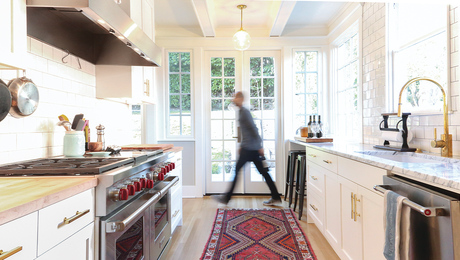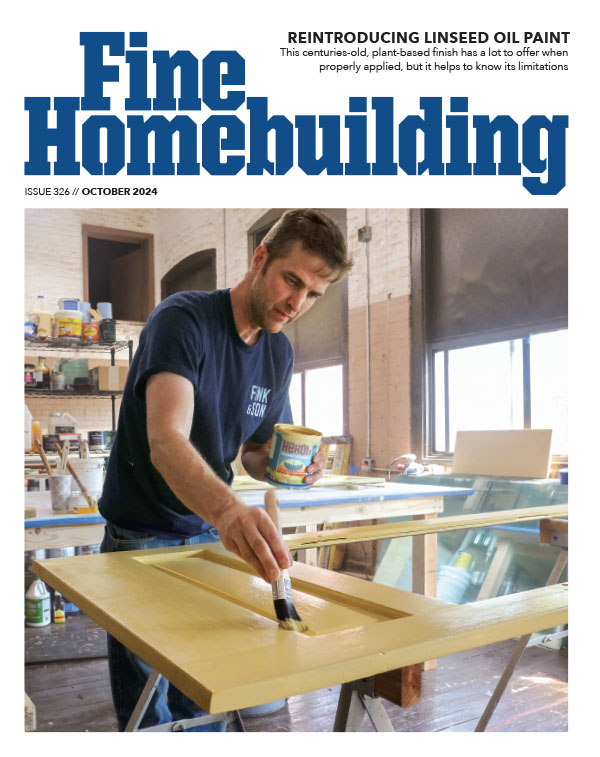radiant floor insulation over sealed crawl space
I’m seeking advice on the proper insulation facing to use. The floor is radaint heated and the crawel space is sealed shut and uses a dehumidifyer to control any moisture. Since both sides of the floor are climate controlled which way should the batt or roll insulation facing be installed?
Also any ideas on a good way to secure batt or roll insulation up into floor bays which are 32″ x 8′?
Thanks


















Replies
Top of the line
would be to install foil-faced polyiso between the joists, foamed along the edges for an air seal. Second best would be foil faced fiberglass roll with the foil facing up. Either way, you want a ~2" airspace between the foil and the bottom of the subfloor, assuming your tubes are strapped to the bottom of the subfloor, 1" if the tubes are above the subfloor.
I should have mentioned that the tubes are above the subfloor.
Regardless
you leave an airspace under the subfloor and insulate with a foil-faced material, or otherwise provide a radiant barrier.
No hint where John lives, or how well the crawl is sealed.
I'd put the barrier side down if you use fiberglass, both because it makes the FG more effective and because in most cases you'll have higher humidity on the down side. In a cooling situation you could have condensation with barrier-up.
Foil-faced foam is probably the better choice. Generally it can be cut for a friction fit, with only a little squirt foam needed in spots. Tape the joints with foil tape or "sheathing tape" (NOT "duct tape").
Locaton
John lives in California about 50 miles north of San Francisco and we are pretty mild. The crawl space is completely sealed with a 12 mil product designed for specifically for sealing crawl spaces. The seal encapsulates the floor, walls and columns. Its pretty well sealed.
I need to do the insulation within budget and I really don't have the cash to do the custom spray foam insulation. The ridged or sheet insulation I am finding is very expensive also. I did look at the foil faced sheet insulation product but the R value seems so low that I wondered if I would be better off installing R19 rolls. I am hoping to do this with standard batt or roll insulation. I know its not the "best" option but what fits in the budget and readily available.
If I do the job with standard roll insulation does it even matter if the insulation has a vapor barrier since both sides of the floor are conditioned?
The foil is not
there to serve as a vapor barrier in your application, it is a radiant barrier. It reflects radiant heat back up towards the living space.
How odd to have a dehumidifier serve a crawlspace! If the floor is sealed well w/ a vapor retarder, then why the need for the dehumidifier?
Put the foil/vapor retarder up on the insulation. Support w/ wood lath or twine criss crossed and stapled. Either can work well. Tyvek works, too, but is expensive.
The foil faced sheet insulation ... e.g. Thermax would work well ... and have the best R-value per inch (around 6.8-7.0). You said it didn't have a very good R-value? Maybe you're mistaking the product. But you also imply you checked sheet products and they were expensive. You pretty much get what you pay for in insulation. A rigid sheet product gives you high R in a small space, so if that is the need, you use it. In your case you probably don't need it. Use foil faced batts ... it's inexpensive.
Hi,
If the crawl space is a conditioned and non-vented to the outside, you might consider just insulating the crawl space walls. This is usually less area and less trouble than the floor.
Maybe combine the side wall insulation with just a radiant barrier on the bottom of the flooor joists -- reflective barriers are pretty effective on downward heat transfer.
Gary